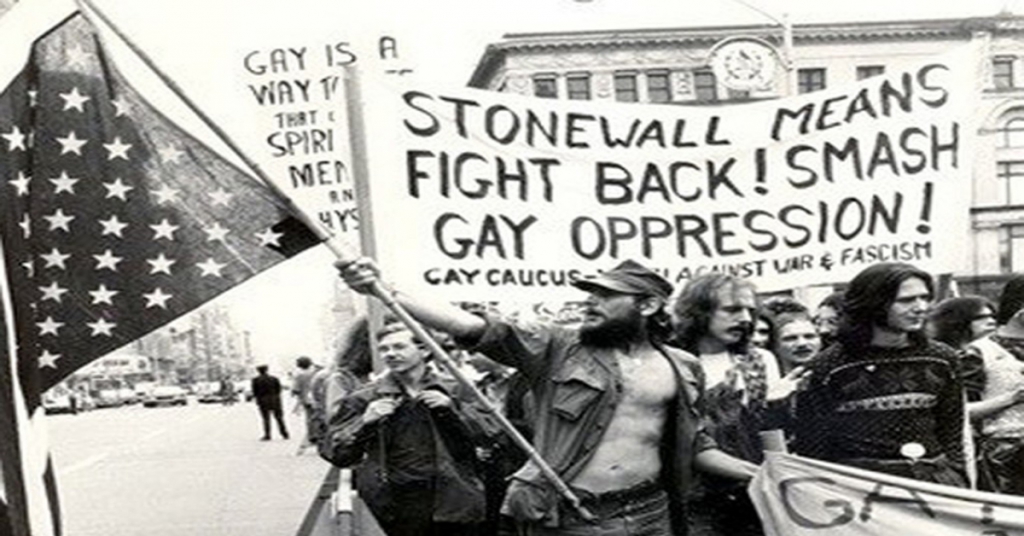June 28 marks the anniversary of Stonewall Uprising, one of the most important events in the international LGBTQ movement. It started with a raid by the New York Police Department (NYPD) at the Stonewall Inn in Greenwich Village in New York City in the early hours of the morning in 1969. This was followed by days of violent demonstrations by members of the LGBTQ community. Here is the story of all the transpired on that fateful night.
The fascinating history of Stonewall Inn
Stonewall Inn is a well-known gay bar located in Greenwich Village in Manhattan. It has a rather colourful history. It was originally a set of stables built between 1843 and 1846. It became a tea room during the prohibition era and operated under the name Bonnie’s Stone Wall after its owner Bonnie. When it was converted into a restaurant, it was renamed Bonnie’s Stonewall Inn.
In 1966, three alleged members of the mafia invested in the establishment and turned it into a gay bar. Gradually, Stonewall Inn grew into one of the largest gay establishments in the US. While it was common for cops to raid gay bars, they were allegedly kept away from Stonewall Inn by paying weekly bribes.
The original club that was located on 51-53 Christopher Street, what was then considered a relatively liberal neighbourhood, but shut down after the riots. It was relocated to Miami Beach in 1972 but burnt down two years later. In 1990 a bar called Stonewall was opened in the western half of the original Christopher Street property in NYC.
In 2000 it was designated a National Historic Landmark in 2000. In 2007 the bar was renovated and renamed the Stonewall Inn. On June 23, 2015 the establishment became the first to be recognised by the NYC Landmarks Preservation Commission due to its significance in the LGBTQ movement and on June 24, 2016, National Stonewall Museum was named the first US National Monument dedicated to the LGBTQ rights movement.
Homophobia and discrimination
There was widespread homophobia in the United States during the 50s and the 60s, but human rights groups were campaigning hard to assimilate gender and sexual minorities into mainstream society. There were often restrictions against LGBT people entering hotels and other establishments. Drag queens, transgender people, effeminate men, butch lesbians and other visible gender and sexual minorities often faced extreme discrimination and were often turned away at the door itself.
In fact, Stonewall Inn itself earlier only admitted men, but gradually opened its doors to transgender people and queer women. Having a safe space like Stonewall Inn was a big respite for the community that could express themselves freely within the Inn’s four walls. Which is why when the place was raided by the police on the pretext of stopping prostitution, and patrons were arrested and huddled into police vans, it sparked a huge outcry from not just the LGBTQ community, but also several other civil rights groups.
The Raid and the ‘Riot’
At about 1:20am on June 28, 1969, Seymore Pine of the NYC Vice Squad Public Morals Division and four of his officers joined two male and two female under-cover officers already inside the establishment. They promptly arrested patrons, but the vehicles to transport them arrived late, by which time a huge crowd gathered outside. This crowd began to swell as the night progressed. In those days raid procedure required women police officers to take people dressed as women aside to confirm their gender. But many people dressed as women (including cross dressers and transgender people) refused to allow this undignified checking to be carried out. Also, many patrons inside refused to provide identification.
But the trigger for the rioting was when a scuffle broke out as Storme’ DeLarverie, a butch lesbian was handcuffed and repeatedly dragged towards a police van. She escaped repeatedly and fought with the policemen who tried to lead her to the van. After DeLaverie was forcefully bundled off into the van, the crowd’s rage boiled over.
They began to hurl pennies, bottles, cobblestones and other objects at the cops. The expression of outrage was so severe that the Tactical Police Force had to be brought in. At one point the Stonewall Inn itself was set on fire, but it was brought under control by the NY Fire Department.
There were widespread demonstrations at and around the Stonewall Inn in the days and nights that followed. Many such agitations turned violent. However, though the incident has been termed a riot, Storme’ DeLarverie insisted,
It was a rebellion, it was an uprising, it was a civil rights disobedience — it wasn’t no damn riot.”
Author David Carter writes in his book Stonewall: The Riots That Sparked The Gay Revolution that legendary drag queen Marsha P. Johnson was among those who were in the vanguard against the pushback against the police during the uprising. Carter’s book quotes other gay rights activists who claimed that Johnson threw a shot glass into the burning building and screamed, “I got my civil rights.” But Johnson denied this and the entire “shot glass” incident has been disputed.
However, what cannot be disputed is how the Stonewall incident was a shot in the arm for the gay rights movement in the United States. Several key gay rights organisations such as the Gay Liberation Front, GLAAD and PFLAG were born from the sparks that few on the night of the Stonewall Uprising.
* Feature Image Photo via CBSnews.com/ Photo credit: Leonard Fink

